The Amazon River, a lifeline of South America, holds many secrets. Among them, the enigmatic pink river dolphins. These creatures, with their distinctive blush hue, are a marvel of nature and a symbol of the Amazon’s rich biodiversity.
But why are these dolphins pink? It’s a question that has intrigued scientists and nature enthusiasts alike. The answer lies in their unique biology and the environment they inhabit.
These dolphins, also known as botos or bufeos, are not just fascinating for their color. They are intelligent, curious, and play a crucial role in the Amazonian ecosystem. Yet, they remain shrouded in mystery, their behaviors and habits a subject of ongoing research.
Sadly, these magnificent creatures are under threat. Habitat destruction, pollution, and climate change are jeopardizing their survival. Conservation efforts are more critical than ever.
In this article, we’ll delve into the mysteries of the pink river dolphins. We’ll explore their habitat, diet, social behavior, and the challenges they face. We’ll also discuss how you, as a responsible traveler, can contribute to their conservation. Join us on this journey into the heart of the Amazon, as we unravel the secrets of these remarkable creatures.

Pink river dolphins, scientifically named Inia geoffrensis, dwell in the Amazon and Orinoco river basins. Known locally as boto, these dolphins captivate with their stunning pink coloration and fascinating behaviors.
Uniquely adapted for a freshwater life, pink amazon dolphins navigate with incredible agility. Their unfused neck vertebrae allow them to turn their heads 180 degrees. This flexibility is crucial for exploring complex, flooded forests.
These dolphins hold the title of the largest freshwater dolphin species. Males can reach up to 2.5 meters in length and weigh around 185 kilograms. Their size gives them dominance as apex predators in their ecosystem.
The social structure of pink river dolphins differs from oceanic species. They tend to lead solitary lives or form small groups, rather than large pods. This behavior adds to their mysterious allure, intriguing scientists and travelers.
Despite their elusive nature, pink river dolphins are intelligent and curious. Their playful antics, sometimes involving objects, reflect their inquisitive minds. This combination of traits makes them an appealing subject for both scientific research and ecotourism. Their enigmatic presence is a testament to the Amazon’s unparalleled biodiversity, inviting all to discover their mysteries.

The striking pink color of these Amazonian dolphins fascinates many. This unusual hue can range from light blush to vibrant pink. Several factors contribute to this captivating coloration.
The primary reason for their pink color is the presence of numerous capillaries near the skin’s surface. These small blood vessels enhance blood flow, giving the dolphins their distinctive shade. This adaptation may help regulate body temperature in varied water environments.
Interestingly, their color can change with age and behavior. Young dolphins are typically born gray and gradually turn pink as they age. External factors like water temperature can also influence their pinkness.
The pink coloration may serve a purpose beyond aesthetic appeal. Some researchers suggest it helps with camouflage in muddy waters or social communication. This hypothesis, although speculative, adds another layer to their mysterious nature.
The question of “why are pink dolphins pink” continues to intrigue researchers. Their unique coloration is just one aspect of their biology that invites deeper understanding. The pink river dolphins remain one of the Amazon’s most wondrous creatures, blending striking beauty with evolutionary adaptation.
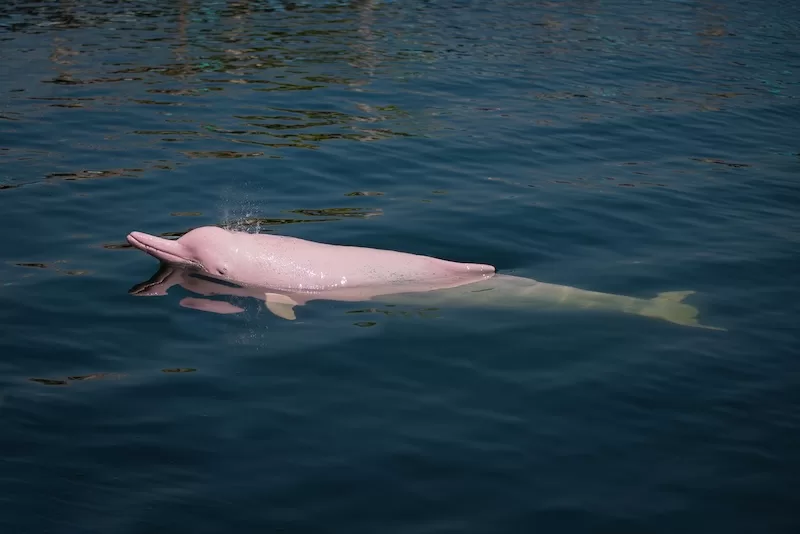
The Amazon pink River dolphin’s habitat spans vast, intricate waterways. They thrive in the Amazon and Orinoco river basins. These areas, rich in biodiversity, provide them a perfect home.
Pink dolphins prefer fresh, warm waters. They are particularly fond of slower-moving rivers, tributaries, and flooded forests. These habitats offer abundant food and shelter.
Their habitat is characterized by varied landscapes, such as:
During the wet season, their habitat expands significantly. Rising river levels flood large forest areas. This change creates new territories and opportunities for hunting.
The survival of pink river dolphins depends on these diverse ecosystems. Habitat loss due to deforestation and pollution poses a significant threat. Protecting these habitats is crucial for their conservation and the overall health of the Amazon ecosystem.
Pink river dolphins are formidable hunters. Their diet consists mainly of fish, spanning over 50 species. They occasionally consume turtles and crabs for variety.
Echolocation plays a key role in their hunting strategy. They navigate and locate prey in murky waters using sound waves. This ability ensures they remain efficient predators.
Their long, narrow snouts are perfect tools for capturing prey. Sharp teeth help them hold onto slippery fish. This adaptation is crucial in their complex aquatic environment.
As apex predators, they maintain a balance in the ecosystem. Their presence indicates healthy fish populations. Monitoring their diet can provide insights into the river’s health. Understanding their role in the ecosystem underscores the importance of conservation efforts.
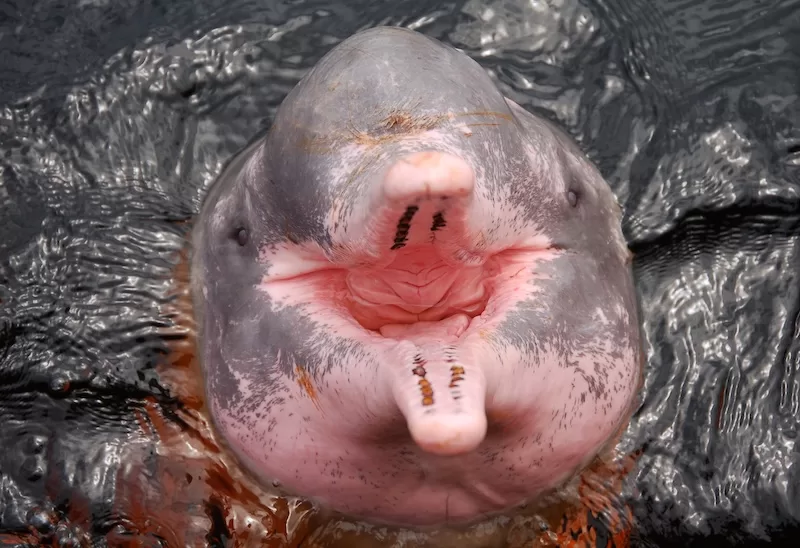
Pink dolphin Amazon demonstrate remarkable intelligence. Their large brains and complex behaviors are subjects of scientific interest. Observations reveal their curious and playful nature.
Despite their solitary tendencies, they sometimes form small groups. These gatherings are often temporary and driven by food availability. Unlike oceanic dolphins, they maintain a less social lifestyle.
Their intelligence is evident in their problem-solving abilities. They interact with their environment and display inquisitive behaviors. Occasionally, they play with objects like sticks or river plants.
Communication among pink river dolphins includes a range of vocalizations. They produce clicks, whistles, and other sounds to convey messages. Studying these sounds helps researchers understand their social interactions.
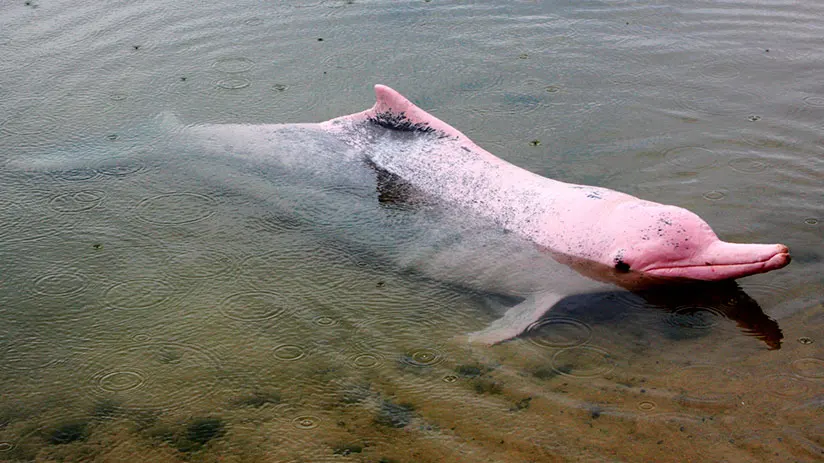
Pink river dolphins hold a special place in Amazonian folklore. They are often regarded as mystical beings. Tales passed down through generations depict them as enchanted creatures.
One popular legend claims dolphins can transform into handsome men. These men visit villages during the night. They charm unsuspecting women, adding a mysterious allure to the dolphins’ reputation.
In local myths, dolphins are believed to possess magical powers. Their ability to change shape and walk on land is a common theme. Such stories reflect the deep cultural significance of these animals.
Understanding this folklore can aid conservation efforts. It fosters respect and appreciation for the dolphins. By honoring these legends, we can promote their protection.
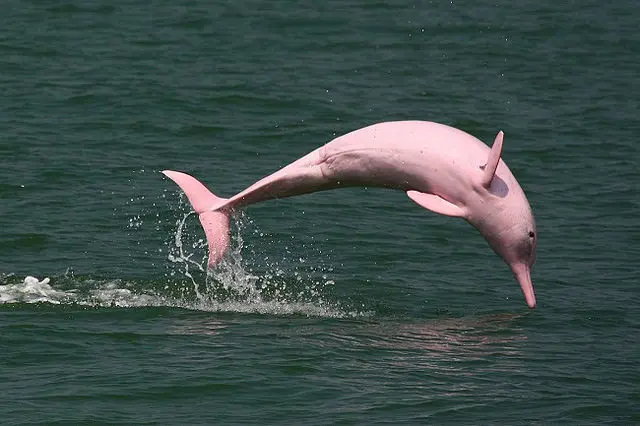
Pink river dolphins are currently classified as endangered. Various factors threaten their survival. Habitat destruction and pollution pose significant risks.
Human activities, such as mining and deforestation, impact their environment. These actions reduce the dolphins’ living space. Pollution from these activities also harms water quality.
Conservationists face significant challenges. Protecting vast and remote areas of the Amazon is difficult. Efforts to enforce conservation laws often fall short due to limited resources.
Collaborative efforts are vital for success. Governments, NGOs, and local communities must work together. Establishing protected areas and sanctuaries can help preserve these majestic creatures. Environmental education initiatives are crucial.
They raise awareness about the importance of preserving the Amazon ecosystem. By understanding these challenges, we can better support conservation efforts and ensure the survival of pink river dolphins.
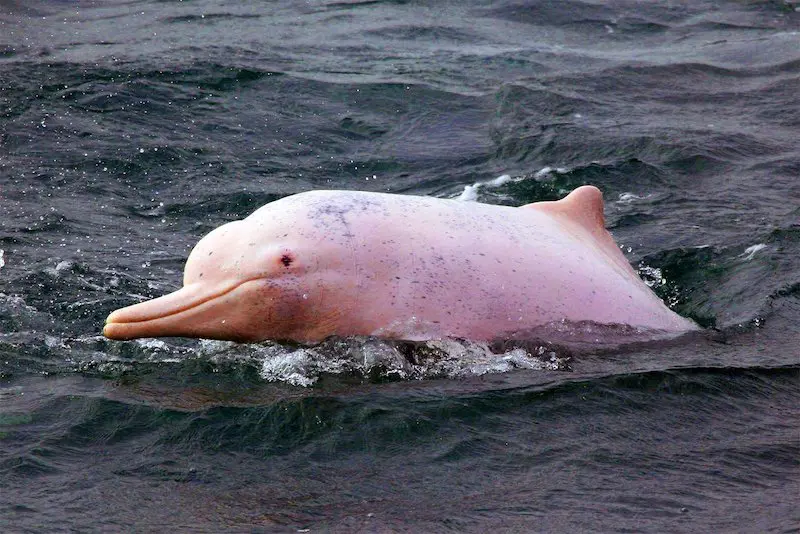
Witnessing pink river dolphins in their natural habitat is truly magical. Knowing when and where to look enhances this experience. The Amazon River basin offers prime locations for dolphin watching.
The best time to observe these dolphins is during the wet season. High water levels from December to May allow dolphins to explore flooded forests. This creates more opportunities for sightings.
Key locations include the Pacaya-Samiria National Reserve in Peru and the Mamirauá Sustainable Development Reserve in Brazil. These protected areas offer rich biodiversity and prime dolphin habitats.
Here are the top spots for seeing pink river dolphins:
Planning your visit during these months and to these locations increases your chances. Watching these remarkable creatures in their natural environment is an unforgettable experience. Enjoy them with respect, following responsible tourism practices for a sustainable adventure.
Ethical dolphin watching ensures a positive impact on both wildlife and local communities. Observing pink river dolphins responsibly protects their environment and promotes sustainable tourism.
Maintaining a respectful distance is crucial. Too close an approach can disturb dolphins and alter their natural behaviors. Always use binoculars or zoom lenses for a closer look.
Choose eco-friendly tours led by knowledgeable guides. These guides understand dolphin behavior and have a deep respect for the environment. They provide valuable insights while minimizing impact on habitats.
Support local conservation efforts and community projects. Your choice of responsible tourism can directly benefit these initiatives. By doing so, you help preserve the Amazon ecosystem for future generations.
Remember, ethical tourism isn’t just about watching wildlife. It’s about enhancing your experience while safeguarding biodiversity. Your mindful actions ensure that pink river dolphins will continue to thrive and enchant travelers for years to come.
Pink river dolphins are vital to the Amazon’s biodiversity. As apex predators, they maintain ecological balance and represent environmental health.
Their unique beauty and enigmatic nature captivate millions. This allure draws attention to the need for conservation and habitat protection efforts.
Preservation is crucial, not just for dolphins, but for the ecosystem and cultures that depend on them. By protecting pink river dolphins, we ensure the survival of countless species and the amazement of future generations. Sustainable tourism and education are key to this conservation. Your actions can make a significant difference in securing their future.
If you got any questions, please do not hesitate to send us a message. We reply within 24 hours!
+51 900 394 399
info@biomanuexpeditions.com
reservas@biomanuexpeditions.com
